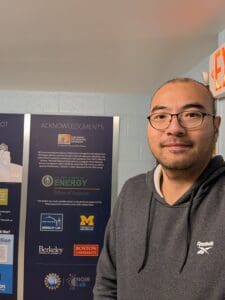As an observational astronomer, my primary research interests lie in the exploration and characterization of minor planets within and beyond our solar system. My work encompasses:
Discovery of Distant Minor Planets: I actively engage in the search for distant minor planet populations that serve as a fossil record of our solar system. These remote bodies offer invaluable insights into the formation and evolutionary history of our celestial neighborhood.
Physical Characterization of Minor Planets: I investigate the physical properties of a diverse range of minor planets—including asteroids and interstellar objects—by analyzing parameters such as size, surface colors, and spectral characteristics. This research provides a deeper understanding of their composition, formation processes, and evolutionary trajectories.
Application of Machine Learning in Astronomical Measurements: I develop and implement advanced computational and machine learning methodologies to enhance the analysis of astronomical data, thereby improving the efficiency and accuracy of detecting minor planets and quantifying their properties.
Together, these research foci form a cohesive strategy that is charting new territories in our solar system. By combining systematic searches, detailed physical characterizations, and innovative computational techniques, my work aims to advance our understanding of the dynamic, diverse, and ever-surprising nature of minor planets.

The spatial distribution of two distinct distant minor planet populations in our solar system. Orange: Plutinos—objects with orbits similar to Pluto’s, residing in a 3:2 mean motion resonance with Neptune. Blue: Neptune Trojans, which share Neptune’s orbit under a 1:1 mean motion resonance. Green: The Sun. Red: Neptune.
One of my most exciting projects involves linking the surface colors of distant minor planets to their spectral types. The spectra of these objects are highly informative; by examining the abundance of various ices—such as water ice, methane ice, and carbon dioxide ice—we can infer their likely formation locations, since each ice has a unique sublimation temperature. However, obtaining these spectra is challenging, often requiring hours of observation time on the James Webb Space Telescope (JWST) for just a single object.
In contrast, surface colors, while less detailed, still carry valuable information about an object’s surface composition. Moreover, these colors are much easier to obtain. With survey telescopes like the Vera C. Rubin Observatory set to capture data for thousands of asteroids, we have the opportunity to significantly expand our dataset.
Our recent study, which combined surface color measurements from ground-based telescopes with spectral data from JWST, found a strong correlation between surface colors and the spectral types of distant minor planets. This breakthrough means that we can potentially infer the formation positions of thousands of these objects based solely on their colors, ultimately improving our understanding of how our solar system formed.
Here are a couple of fun facts about me:
Asteroid Honor: I have an asteroid named after me—11462 Hsingwenlin (1981 ES23). I believe this honor came about because the discoverer wanted to promote the contributions of East Asian solar system astronomers. This unique badge of honor in the astronomical community constantly reminds me of the vast cosmos I study.
Unexpected Path: Early in my academic journey, I applied for computer science and electronic engineering majors. Unfortunately, my applications were unsuccessful due to my lower English proficiency at the time (that is less relevant now, thanks to LLMs). This setback unexpectedly steered me toward physics and astronomy, and eventually led me to work with computers and AI.
